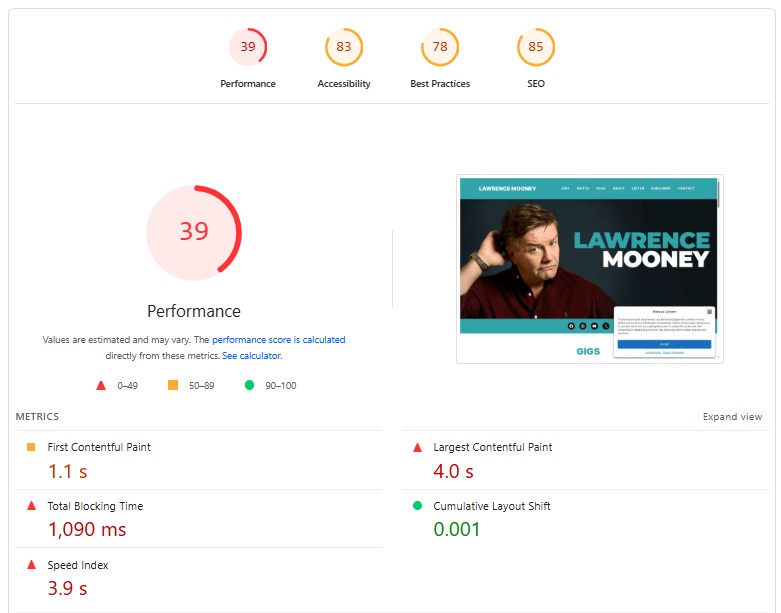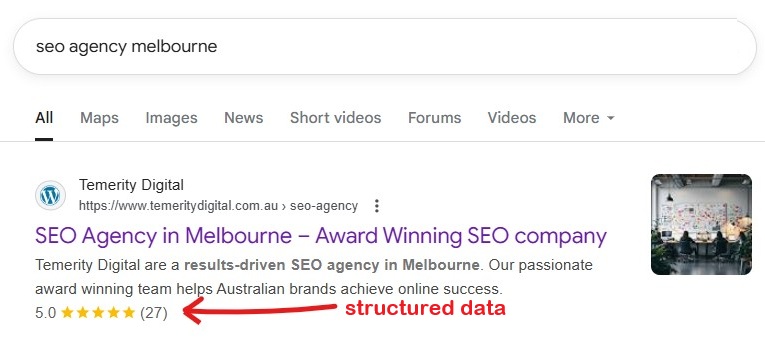
Google’s Top Spot: Your Website’s Guide
Want to know how to get your website to the top of Google? In our latest guide, we break down the essential steps you need to take to make sure your site is indexed, visible and found by the right people. We’ll cover everything from the technical bits Google needs to understand your site, to making content that people actually want to read. We’ll also touch on making your site easy for both users and Google to navigate.
Note, this article is all about “on-page optimisation” which relates to ensuring everything on your website is optimal for the search engines. To rank at the top of Google, you also need exceptional “off-page optimisation” which refers to link building, a strategy to help boost the authority and importance of your site.
Key Takeaways
- Make sure your website meets Google’s basic technical needs so it can be found and understood.
- Create content that is genuinely helpful and reliable for people, using words they actually search for.
- Organise your website logically and make sure all your important pages can be found through links.
- Improve your website’s speed and make sure it works well on mobile phones, as this really matters to users.
- Use clear language in your links and connect related pages to help people and search engines find their way around.
Understanding Google’s Search Essentials
To get your website noticed on Google, you need to understand the basics of how it works. Think of these as the foundational elements that make your content eligible to show up and perform well in search results. It’s not about complex tricks, but rather about meeting certain standards.
Google’s Search Essentials are the bedrock of your online visibility. They are broken down into three main areas:
Meeting Technical Requirements for Visibility
This covers the absolute minimum Google needs from a webpage to even consider showing it. Honestly, most websites meet these without even trying. It’s about making sure your site is accessible to Google’s systems.
Adhering to Spam Policies for Optimal Ranking
This is pretty straightforward: don’t try to game the system. Google has clear rules against spammy tactics. Following these policies is key to avoid being penalised or, worse, removed from search results entirely. Focus on providing genuine value, and you’ll naturally avoid these pitfalls.
Implementing Key Best Practices for Search Performance
Beyond the basics, there are several practices that significantly help your site perform better. These are the things that can really move the needle on your search performance and improve your Google search ranking. They are the core of effective seo strategies for google.

Crafting Content That Ranks
Creating Helpful, Reliable, People-First Content
Google’s algorithms are increasingly sophisticated, aiming to serve users with content that is genuinely useful and trustworthy. To achieve ranking higher in Google searches, your content must be crafted with the reader at its core. This means prioritising clarity, accuracy, and providing real value. Think about what questions your audience has and aim to answer them thoroughly and directly. Your content should feel like it was created by an expert, for a human.
Consider the format of your content. While written articles remain important, Google also surfaces video, audio, and visual content. Research your target keywords to see what formats are already performing well. If searches for your topic frequently show videos, it’s worth exploring that medium. Producing high-quality content in the right format can significantly improve engagement and visibility.
Content that is well-structured and easy to digest is more likely to be favoured by search engines and appreciated by users. Break down complex topics into manageable sections with clear headings and subheadings.
Optimising for Target Keywords and Variations
While the landscape of search is evolving, the fundamental principle of targeting relevant keywords remains. Identify the terms and phrases your potential customers use when searching for your products or services. Integrate these keywords naturally throughout your content, including in headings, subheadings, and the title tag. Don’t just focus on a single keyword; explore variations and related terms that users might employ. This approach helps search engines understand the full scope of your content – also known as topical authority – and its relevance to a wider range of queries.

Leading with Answers to Satisfy User Intent
When users search for information, they typically want an answer quickly. Your content should lead with the most important information, addressing the user’s query upfront. Avoid burying the key takeaway in lengthy introductions. By providing a clear, concise answer at the beginning, you satisfy user intent immediately and signal to Google that your page is a valuable resource. This direct approach not only improves user experience but also contributes positively to your search performance and ranking in AI searches.
Enhancing Your Website’s Discoverability
To truly achieve top search engine results and increase your website visibility on Google, you need to make sure search engines can find and understand your content. This involves a few key areas that, when addressed correctly, build a strong foundation for your site’s performance.
Ensuring Your Links Are Crawlable
Search engines like Google discover new pages by following links from pages they already know. If your internal links aren’t set up correctly, Google might miss entire sections of your website. This means potential customers could never find your products or services. You want to make it as easy as possible for Google’s bots to ‘crawl’ your site, much like a person would browse through it. This involves checking that links are active and correctly formatted, and that there are no technical barriers preventing access.

Building a Logical Site Structure
A well-organised website is easier for both users and search engines to navigate. Think of it like a library: if the books are all over the place, finding what you need is a challenge. A logical structure means your pages are organised in a clear hierarchy, usually starting from the homepage and branching out to categories and then individual pages. This helps distribute ‘link equity’ (the value passed between pages) effectively and allows search engines to understand the relationship between different pieces of content on your site.
Submitting and Managing Sitemaps Effectively
A sitemap is essentially a roadmap for search engines, listing all the important pages on your website. While Google can discover pages through links, a sitemap provides a direct list, making the process more efficient. You should submit your sitemap to Google Search Console. It’s also important to keep your sitemap updated, especially when you add new content or make significant changes to your site structure. This ensures Google is always aware of your latest and most relevant pages.
An expert SEO company will be able to assist with all of these.
Improving User Experience and Page Speed
In today’s digital landscape, a sluggish website is a significant barrier to attracting and retaining visitors. Google prioritises user experience, and page speed is a major component of that. If your site takes too long to load, or doesn’t function correctly on different devices, users will simply leave and find what they need elsewhere. This negative signal can impact your search rankings. Making your pages fast and reliable, especially for mobile users, is not just about pleasing search engines; it’s about building trust and encouraging conversions.
Optimising Pages for Mobile Performance
With the majority of internet traffic now coming from mobile devices, ensuring your website performs flawlessly on smartphones and tablets is non-negotiable. This means your layout should adapt seamlessly to smaller screens, buttons should be easy to tap, and content should be readable without excessive zooming or scrolling. A poor mobile experience can lead to immediate user abandonment, sending a clear message to Google that your site isn’t meeting user needs.
Leveraging Page Speed Insights for Improvements
To understand how your website is performing and identify areas for improvement, you should regularly use tools like Google’s PageSpeed Insights. This free resource provides a detailed analysis of your page’s speed on both desktop and mobile devices. It offers specific, actionable recommendations, such as optimising images, reducing server response time, and minimising code. Acting on these suggestions is key to boosting your site’s performance.

Creating Fast, Mobile-Friendly Pages
Building a website that is both fast and mobile-friendly requires a strategic approach. This involves optimising images for web use, minifying CSS and JavaScript files, and choosing a reliable hosting provider. Furthermore, consider implementing techniques like lazy loading for images and videos, which only load content as the user scrolls down the page. By focusing on these elements, you create a positive user journey that encourages engagement and supports your search engine visibility goals.
Strategic Internal Linking for Navigation
Internal linking is about connecting your own web pages together. Think of it as building a helpful roadmap for both your visitors and search engines. When done well, it guides people to the information they need and shows search engines how your content is organised and related.
Using Descriptive Anchor Text
Anchor text is the clickable text in a hyperlink. Instead of using generic phrases like “click here,” you want to use text that clearly tells the reader what they’ll find on the linked page. For example, if you’re linking to a page about Australian native plants, your anchor text could be “learn about Australian native plants” rather than just “learn more.” This gives context and helps search engines understand the topic of the linked page.
Linking to Relevant and Helpful Pages
Every internal link should have a purpose. It should connect a user from one piece of content to another that offers further detail, a related concept, or a solution to a subsequent question. Avoid linking to pages that aren’t directly relevant to the current topic, as this can confuse users and dilute the authority of your links. Focus on providing genuine value and a logical flow of information.
The Importance of Natural Internal Linking
Building internal links should feel organic, not forced. Search engines can detect when links are added purely for SEO purposes without adding value to the user. Aim for a natural integration of links within your content that genuinely helps the reader. This means linking when it makes sense contextually, rather than trying to link to every possible page from every other page.
A well-structured internal linking strategy supports user experience and improves your site’s discoverability.
Leveraging Structured Data for Rich Results
Structured data is like a secret handshake with search engines, telling them exactly what your content is about. It’s not just about making your pages look pretty in search results; it’s about helping Google understand your information more precisely. This can lead to what are known as rich results, which are those eye-catching snippets that stand out from the standard blue links.
Understanding How Structured Data Works
Think of structured data as a way to organise the information on your web pages so that search engines can easily read and interpret it. You add specific code, often in the form of Schema.org vocabulary, to your HTML. This code acts as a label, identifying elements like product prices, event dates, recipe ingredients, or author names. When Google crawls your page, it reads this code and can then display this specific information directly in its search results. This makes your listing more informative and can significantly increase click-through rates.

Generating Structured Data with JavaScript
Many modern websites are built using JavaScript frameworks, which can make adding structured data a bit trickier. If your content is dynamically rendered by JavaScript, you’ll need to ensure that the structured data is also generated or embedded in a way that Googlebot can find and process it. This often involves using JSON-LD (JavaScript Object Notation for Linked Data), which is a recommended format. You can embed JSON-LD scripts within your HTML, and Google can execute them to extract the structured data. Testing your implementation with tools like the Rich Results Test is vital to confirm it’s being read correctly.
Enhancing Search Appearance with Enriched Results
By implementing structured data correctly, you can qualify for a variety of rich results. These can include:
- FAQs: Displaying frequently asked questions and their answers directly in the search results.
- How-tos: Providing step-by-step instructions that users can follow without leaving the search page.
- Product Information: Showing prices, availability, and ratings for e-commerce items.
- Event Details: Highlighting dates, times, and locations for upcoming events.
- Recipes: Presenting cooking times, ingredients, and ratings for culinary content.
These enriched results not only make your website more visible but also provide immediate value to the user, encouraging them to click through to your site. It’s about making your content more accessible and useful right from the search results page.
Mastering Meta Tags and Site Control
Meta tags and how you control your site’s presence on Google Search are pretty important. They’re like the signposts and instructions you give to search engines, telling them what your pages are about and how they should be treated. Getting these right can make a big difference in how your website appears in search results.
Utilising Meta Tags for Search Appearance
Meta tags are snippets of text that describe a page’s content; they don’t appear on the page itself but in the HTML source code. The most well-known are the title tag and the meta description tag. The title tag is what shows up as the clickable headline in search results, so it needs to be clear, concise, and relevant to the page’s content. Think of it as your page’s name.
The meta description is the short blurb that appears below the title in search results. While not a direct ranking factor, a good meta description can significantly influence click-through rates by giving users a compelling reason to visit your page. It’s your chance to sell your content to the searcher.
Understanding Robots Meta Tags and Attributes
Controlling how search engines crawl and index your site is vital. This is where robots meta tags and X-Robots-Tag HTTP headers come into play. You can use these to tell search engines whether to index a page or follow the links on it. For example, noindex tells Google not to show this page in search results, and nofollow tells it not to follow any links on the page. These are powerful tools for managing your site’s SEO, especially for pages you don’t want appearing in search, like internal admin pages or duplicate content.
Controlling Content Visibility on Google Search
Beyond the robots meta tag, other attributes and directives help manage visibility. The canonical tag, for instance, is used to indicate the preferred version of a page when you have similar or duplicate content. This stops search engines from getting confused about which page to rank. Similarly, using noindex on specific pages prevents them from being indexed. You can also use the data-nosnippet attribute to prevent a snippet from being shown in search results for a particular page. Effectively managing these controls means you’re guiding Google to the most important content on your site, rather than letting it guess.
Think of meta tags and these control attributes as your direct line to Google’s crawlers. They are not suggestions; they are instructions that, when used correctly, help ensure your most valuable content is presented to users in the best possible way.
Putting It All Together for Google’s Top Spot
So, you’ve learned a lot about getting your website noticed by Google. It’s not just about stuffing keywords in, you know? It’s really about making sure your content is helpful and easy for people to find. Remember to keep your site running smoothly, make sure it looks good on phones, and use clear language. Think about what someone searching for your product or service would actually type.
By focusing on these basics and consistently providing good information, you’re setting yourself up for success.
It takes a bit of effort, sure, but seeing your website appear when people need you is totally worth it. Keep at it, and you’ll see the difference.
Frequently Asked Questions
What are Google’s Search Essentials?
Think of Google’s Search Essentials as the fundamental rules for getting your website noticed on Google. They cover making sure your site works properly for Google’s systems, avoiding sneaky tricks that could get you penalised, and generally doing things the right way to help your site perform well in search results. Following these helps Google understand and show your content.
How can I create content that ranks well on Google?
To make your content rank well, you should create information that is genuinely helpful and trustworthy for people. Use the words that people actually type into Google when they’re looking for something. Make sure your main point or answer is easy to find, ideally right at the top of the page, so users get what they need quickly.
How do I make sure Google can discover my website’s pages?
You need to ensure that Google can easily find and read all the pages on your website. This means making sure your links work correctly and that your website has a clear, organised structure, like a well-laid-out book. Submitting a sitemap also helps Google discover all your important pages.
Why is page speed and mobile-friendliness important for my website?
Page speed is really important because slow websites frustrate users, and Google notices this. You can use tools like PageSpeed Insights to see how fast your pages load and where you can make them quicker. Also, ensure your website looks and works great on mobile phones, as many people search using their devices.
What is strategic internal linking and how should I use it?
Internal links connect different pages within your own website. Use clear descriptions in the text that you link from (this is called anchor text) and make sure the links point to other relevant and useful pages. This helps both visitors and Google navigate your site more easily.
How can structured data improve my website’s appearance in search results?
Structured data is like adding special labels to your website content that help Google understand exactly what your page is about, such as if it’s a recipe, an event, or a product. This can help your website appear with more detail in search results, like showing star ratings or cooking times, which can attract more clicks.
Share this article
A quick overview of the topics covered in this article.
Latest articles
November 1, 2025
November 1, 2025
November 1, 2025





